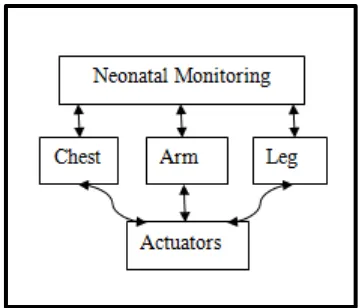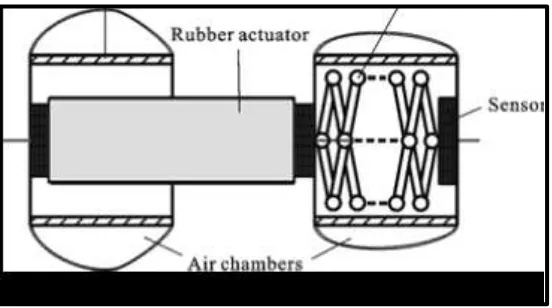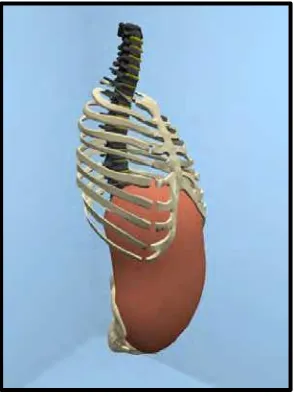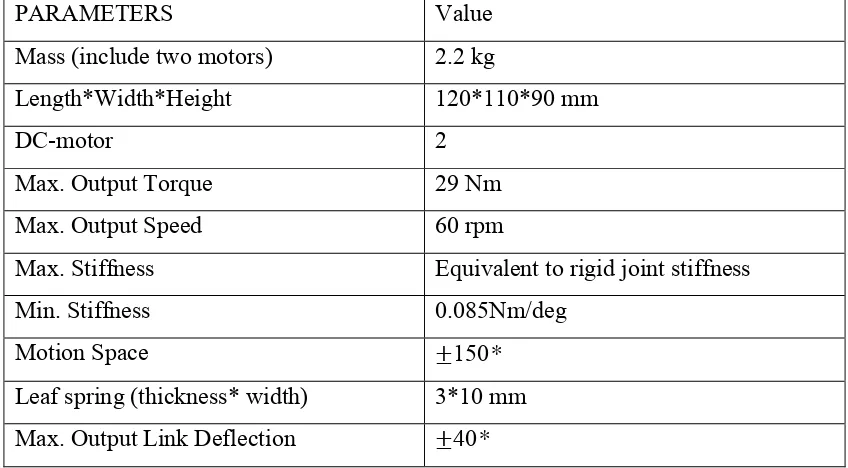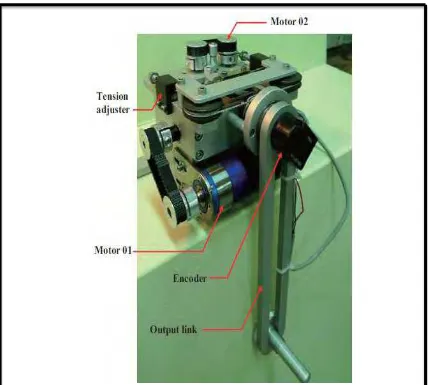i
EXPLORING AND DESIGNING ACTUATOR FOR NEONATAL BABY’S CHEST SIMULATOR
AHMAD WITRY QUAYUM BIN MOHD NOR
This Report Is Submitted In Partial Fulfillment of Requirements For The Bachelor Degree in Electronic Engineering (Industrial Electronics)
Fakulti Kejuruteraan Elektronik dan Kejuruteraan Komputer Universiti Teknikal Malaysia Melaka
v
DEDICATION
vi
ACKNOWLEDGEMENT
First of all, much thanks to Almighty God for giving me the strength and motivation to finish the task that given to me. I like to thank my parent for the support, understanding and encouragement to fulfil my task of completing the FYP and this thesis. I also would like to sincerely thank my supervisor, En. Sani Irwan Bin Md Salim, for his guidance and support throughout and especially for his confidence. Forgive me if there is wrong doing that I have done in the time you supervising me. I also indebted to Universiti Teknikal Malaysia Melaka (UTeM) library for the assist on supplying the knowledge and relevant research to accomplish my project. To all my friends, thank you for the support, understanding, motivation and encouragement in the way of accomplishing this project. Thank for giving the ideas and borrowing any equipment that was used to complete the project. Your friendship makes my life wonderful. Lastly, I like to thank all person that contribute direct or indirectly to accomplish my project. My God bless you all for the help given.
vii
ABSTRACT
viii
ABSTRAK
ix
TABLE OF CONTENTS
CHAPTER CONTENTS PAGE
PROJECT TITLE i
DECLARATION ii
APPROVAL iii
DEDICATION iv
ABSTRACT v
ABSTRAK vi
ACKNOWLEDGEMENT vii
TABLE OF CONTENTS viii
LIST OF TABLE x
LIST OF FIGURE xi
1 INTRODUCTION 1
1.1 Introduction 1
1.2 Background 1
1.3 Objective of project 3
1.4 Problem statement 3
1.5 Scope of the project 3
2 LITERATURE REVIEW 4
2.1 Chapter Overview 4
2.2 Electro-Pneumatic Pressure Servo-Control for a Miniature Robot with Rubber Actuator 5
2.3 A Physiological Torso Model for Realistic Breathing Simulation 7
x
Speed High Torque Application 12 2.6 Measurement and Modelling of McKibben Pneumatic
Artificial Muscles 15
2.7 Pneumatic Actuator 19
2.8 Micro Servo Motor 21
2.9 Arduino Uno 25
2.10 Analogue Servo Motor 28
2.11 Type of Mechanical Loads 32
3 METHODOLOGY 33
3.1 Introduction 33
3.2 Project Implementation 33
3.3 Project Flowchart 34 3.4 Software Part 36
3.5 Hardware Part 38
3.6 Block Diagram of Project 39
3.7 Electronics construction 40
3.7.1 Micro Servo Tower Pro SG91R 40
3.8 Software construction 41
3.9 Project Planning 43
4 RESULT AND DISCUSSION 44
4.1 Introduction 44
4.2 Hardware Part of TheNeonatal Baby 44
4.3 Electronics Part 46
4.4 Software Programming 46
4.5 Output Voltage of Servo Motor 47
4.6 Discussion 49
5 CONCLUSIONS
5.1 Conclusions 52
xi
6 REFERENCES 54
APPENDIX A 55
APPENDIX B 56
xii
List of Table
NO TITLE PAGE
Table 2.1 The specifications of AVSEA 9
Table 2.2 Summary of Literature Review 17
Table 2.3 Advantage of Pneumatic Actuator 20
Table 2.4 Comparisons between Arduino UNO, PIC 18F4550
and Raspberry Pi. 24
xiii
List of Figure
NO TITLE PAGE
Figure 1.1 Block diagram of manikin construction of premature
baby 2
Figure 2.1 Structure of the robotic pneumatic pressure control
system 5
Figure 2.2 Rubber used in an actuator 6 Figure 2.3 Rib-cage from the breathing animation 7 Figure 2.4 Active Variable Stiffness Elastic Actuator (AVSEA) 10 Figure 2.5 Adaptive compliant property for Active Variable
Stiffness Elastic Actuator 11
Figure 2.6 Coil inside a motor for 39/12 distributed winding motor 13 Figure 2.7 Isolated coil 36/32 concentrated winding motor 13 Figure 2.8 Block diagram of dynamic testing machine 15 Figure 2.9 A pneumatic system basic component and name of
every part 19
Figure 2.10 Micro servo models SG91R with the structure inside
it by labeling with number 1, 2, 3 and 4 21 Figure 2.11 Microcontroller (Arduino Uno) used to control
xiv
Figure 2.12 Analog Motor Servo with 3 wires 28 Figure 2.13 The duration of the pulse dictates the angle of the
output shaft (shown as the green circle with the arrow) 30 Figure 2.14 Typical speed-torque characteristics of mechanical
loads 31
Figure 2.15 Typical speed-power characteristics of mechanical
loads 31
Figure 3.1 Flowchart for proposal 35
Figure 3.2 Flowchart of software part 36
Figure 3.3 Flowchart of hardware part 38
Figure 3.4 Block Diagram of Project 39
Figure 3.5 The complete image of micro servo with brush 40 Figure 3.6 An arduino IDE software front logo 41 Figure 3.7 Instruction on how to use an Arduino Integrated
Development Environment (IDE) software 42
Figure 3.7 Project Planning (Gantt chart) 43
Figure 4.1 Final product of the neonatal baby 45 Figure 4.2 Show the output voltage of the micro servo
motor using an oscilloscope 47
1
CHAPTER I
INTRODUCTION
1.1 Introduction
Chapter one covers the introduction part of this project. It is contains of background, objectives, problem statements and scopes of the project.
1.2 Background
2
approximately 15% of all babies need admittance into a Newborn Intensive Care Unit or Special Care Nursery.
According to the latest Australia's Mothers and Babies report, of all premature babies born in Australia, approximately:
79% were born between 32 and 36 weeks of gestation. 10% were born between 28 and 31 weeks of gestation. 11% were born at less than 28 weeks of gestation.
Other terms often used for prematurity include „premmie‟, „prem‟ and „pre-term‟. Pre-term birth is associated with a higher risk of neonatal problems.
With the advancement of science and technology, rapid development of robotic has been increasing from year to year. Robot is a re-programmable, multi-functional manipulator (or device) designed to move materials, parts, tools or specialized devices through variable programmed motion of a variety task.
Actuator for neonatal baby's chest simulator is an actuator that capable of movement in chest for robot baby. Micro servo can be used to move the baby chest. The project develops a manikin of premature born baby for medical simulation. For that an actuator is needed which fit into the very small space inside the body. These actuators must be capable generate the chest movement of the baby.
3
Referring to figure above, there are other areas involving manikin construction of premature baby.
1.3 Objectives of project
The main objectives of this study are:
(a) To investigate the neonate‟s baby‟s movement specify in chest movement. (b) To analyze manikin baby‟s chest muscle in term of movement, power
consumption and size.
(c) To construct an actuators for baby‟s chest‟s movement simulation.
1.4 Problem statement
Current implementation of premature baby manikin is not accurate and not mimicking the real experience.
1.5 Scope of the project
The scopes of the software are as follows.
(a) To write and control program is based on the programming language C.
The scope of the hardware is as follows:
(a) Arduino UNO used in this project as the main medium in driving a micro servo motor and control the pulse with modulation.
4
CHAPTER II
LITERATURE REVIEW
2
2.1 Chapter Overview
5
2.2 Electro-Pneumatic Pressure Servo-Control for a Miniature Robot with Rubber Actuator. [1]
This paper presents a new system of pneumatic system robot using rubber actuator.
Figure 2.1: Structure of the robotic pneumatic pressure control system.
6
Structure of the pneumatic robot is composed of three parts: the front holder, the driving part and the rear holder. In moving state, the holders are used to hold the position of the system body and the driving part is used to change the positions of the holders. The two holders are designed with cylindrical structure and covered with air chambers outside. Each holder has two interconnected air chambers; when charged, the two chambers are kept in the same pressure, and hold tightly against the inner wall. The driving part is a pneumatic rubber actuator made of fiber- reinforced rubber with three degrees of freedom. The actuator rubber tube is divided into three identical sector chambers. When the three chambers of the actuator are charged with the same air pressure, the actuator will stretch in axial direction, and when only one of them is charged, the actuator will bend to the direction opposite to the other chambers. So the actuator can drive in axial and any bending directions.
3
4
Figure 2.2: Rubber used in an actuator.
7
2.3 A Physiological Torso Model for Realistic Breathing Simulation. [2]
For the convincing modeling of virtual humans, realistic breathing is an important aspect. This paper is about the simulation of breathing, based on anatomical and physiological principles. The paper has built a torso, including a thorax, a deformable belly, and muscles. This results in a model with two independent breathing systems, namely abdominal and chest breathing, which gives a high degree of realism in simulating breathing. The generated spiral grams, diagrams of lung volume changes, are comparable to normal human ones according to a medical expert. The generated image show convincing breathing sequences at various frequencies. The model itself is made available for public use.
Figure 2.3: Rib-cage from the breathing animation.
8
In order to alleviate the shortcomings of previous models, a physiological torso model have designed a new model that better combines the abdominal and chest breathing, resulting in more natural spiral grams and animations. As an initial basis we used a torso from 3D Cafe .This model have divided this polygonal into its constituent parts: ribs, dorsal vertebra, hip, shoulder blade, and collarbone, which are made rigid, so that constraints can be applied.
2.4 Active Variable Stiffness Elastic Actuator:
Design and Application for Safe Physical Human-Robot Interaction. [3]
In classical robotic applications, robotic systems consist of servo motors, high-ratio reduction and rigid links; mechanical designers prefer to design robotic applications as stiff as possible to make robots manipulate with remarkable speed and precise position movements. However, these robotic applications can hardly interact with people and environments under safety constraints. It poses the very fundamental problem of ensuring safety to humans and protecting the robot. This paper presents an Active Variable Stiffness Elastic Actuator (AVSEA) that is designed and application for safe physical human robot interaction. The AVSEA consists of two DC-motors: one is used to control the position of the joint and the other is used to adjust the stiffness of the system. The stiffness is generated by a leaf spring. By changing the effective length of the leaf spring, AVSEA has the ability to minimize large impact forces due to shocks, to safely interact with the user and/or to become as stiff as possible to make precise position movements or trajectory tracking control easier.
9
Table 2.1: The Specifications of AVSEA
PARAMETERS Value
Mass (include two motors) 2.2 kg
Length*Width*Height 120*110*90 mm
DC-motor 2
Max. Output Torque 29 Nm
Max. Output Speed 60 rpm
Max. Stiffness Equivalent to rigid joint stiffness
Min. Stiffness 0.085Nm/deg
Motion Space 150*
Leaf spring (thickness* width) 3*10 mm Max. Output Link Deflection 40*
10
Figure 2.4: Active Variable Stiffness Elastic Actuator (AVSEA).
